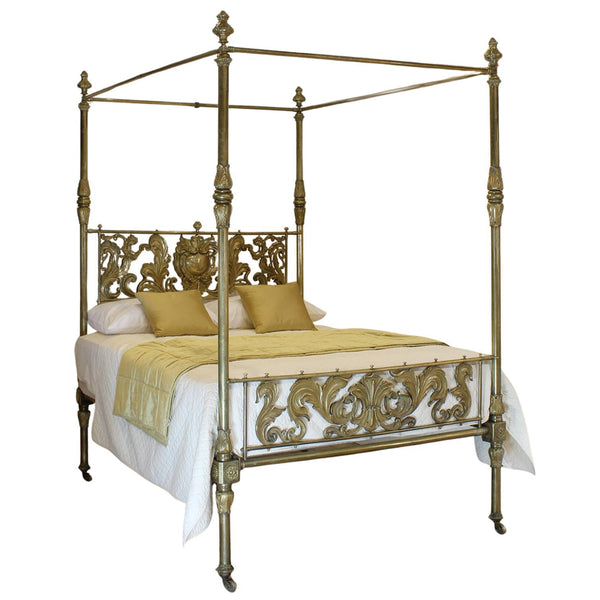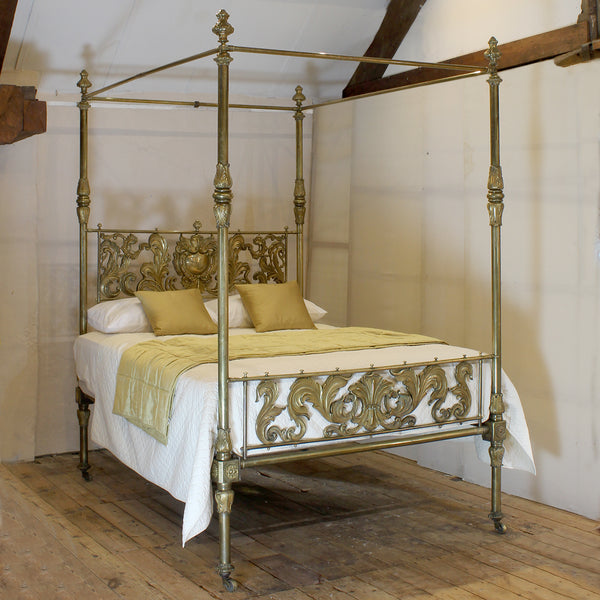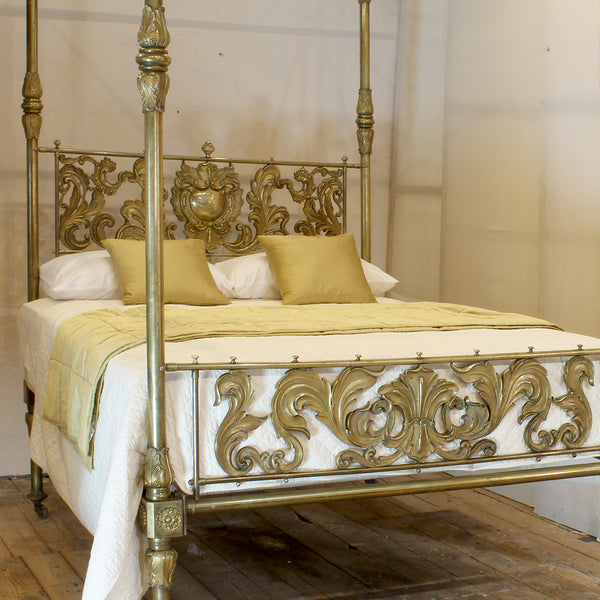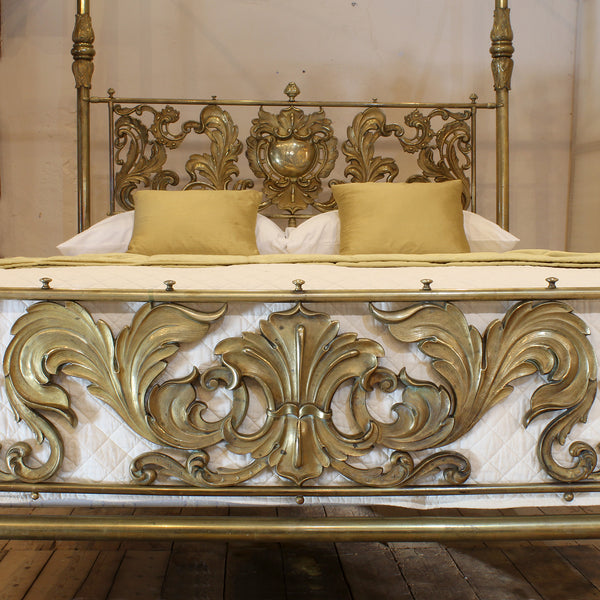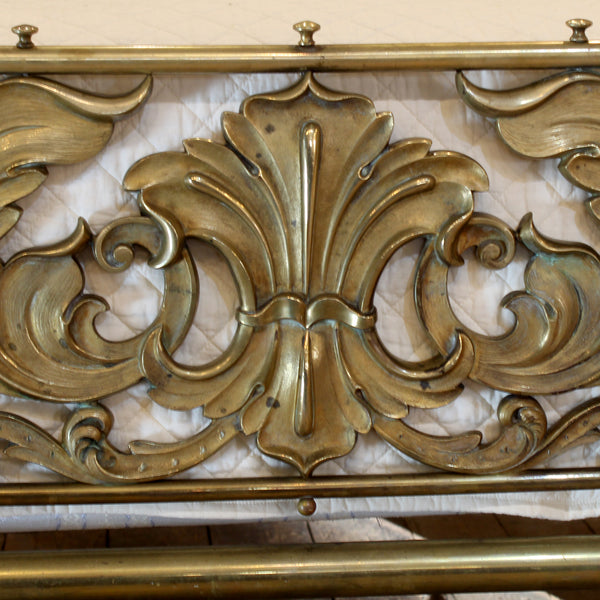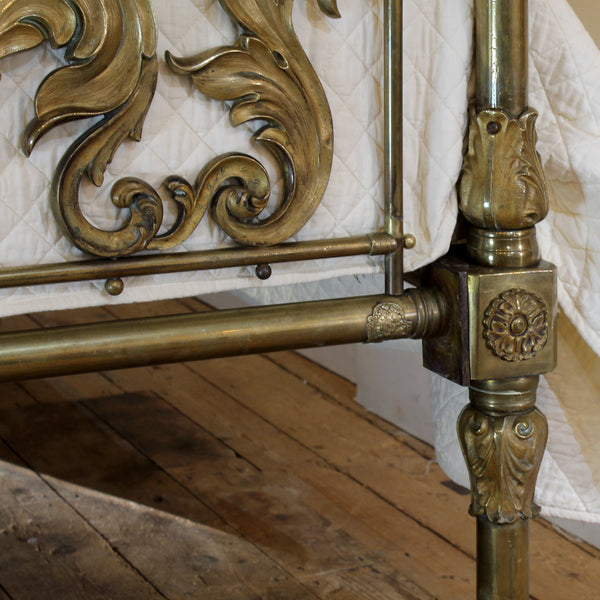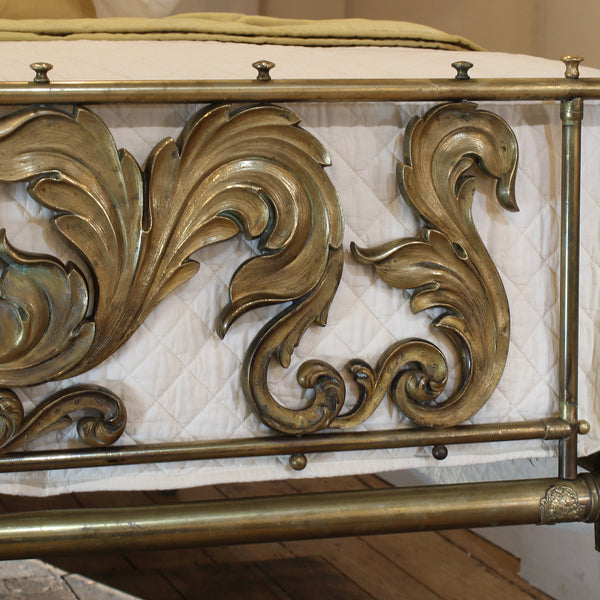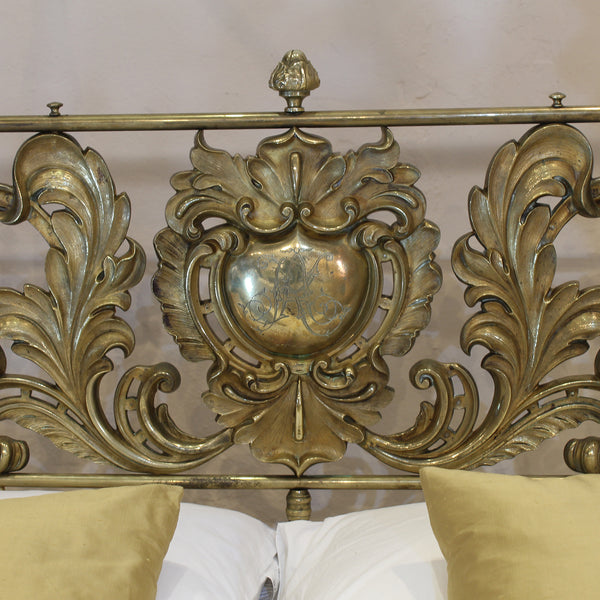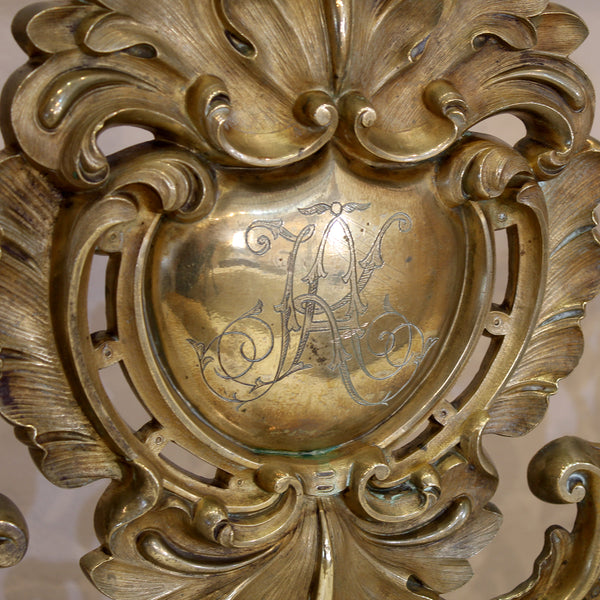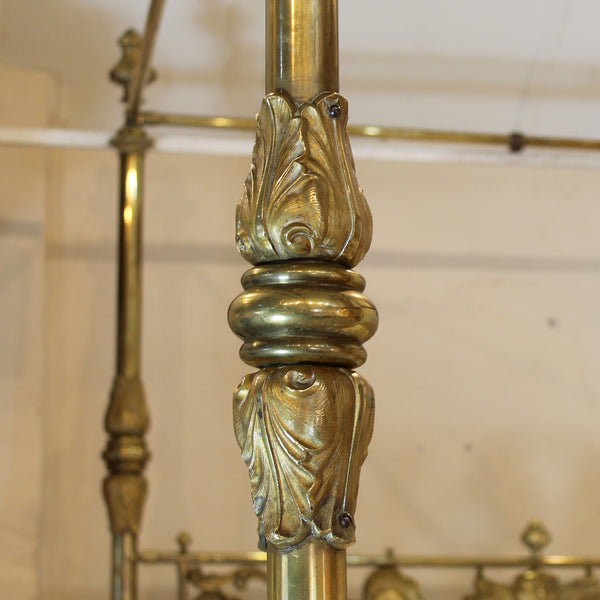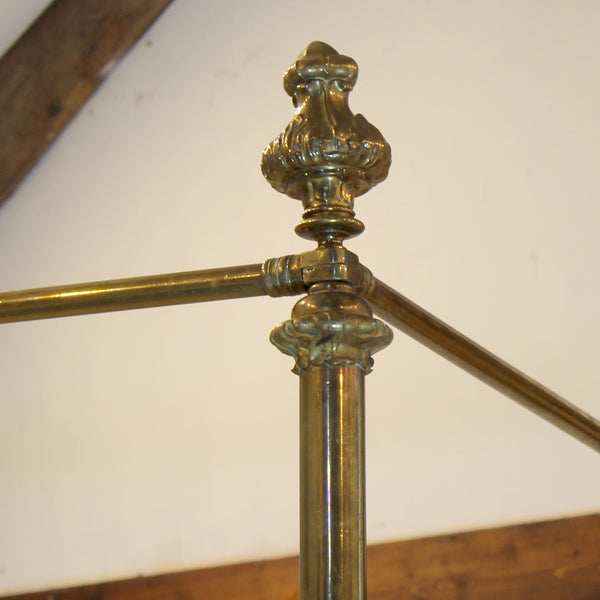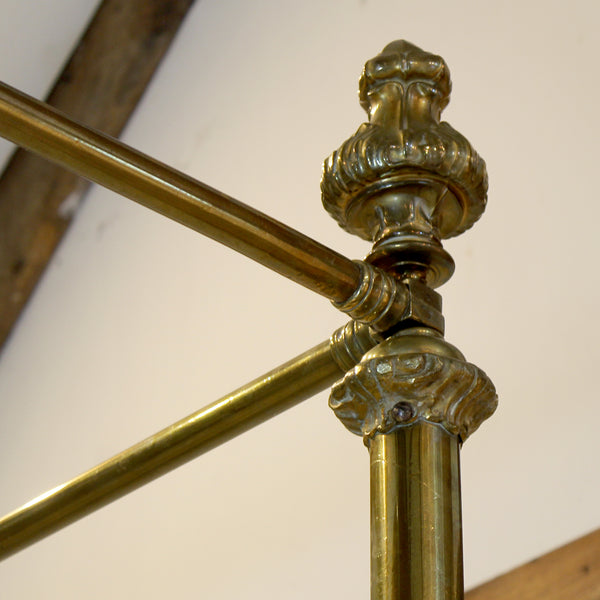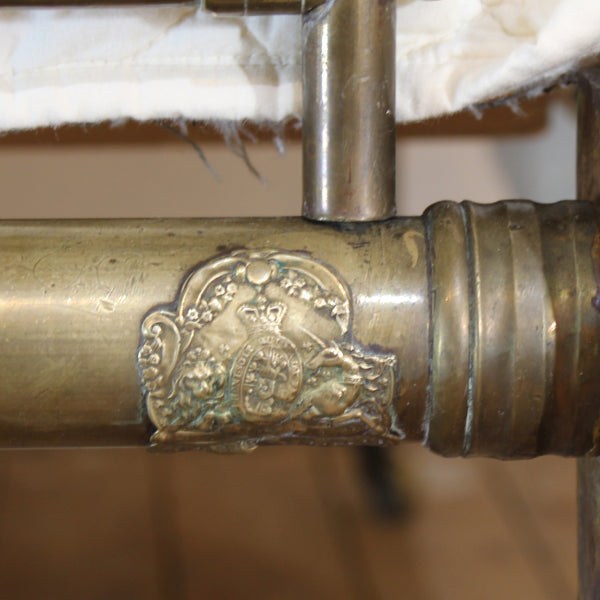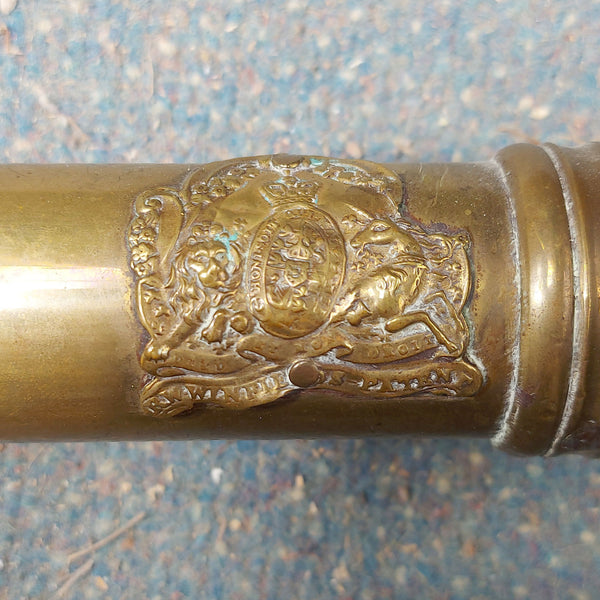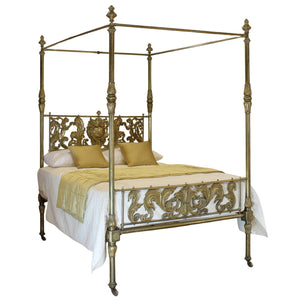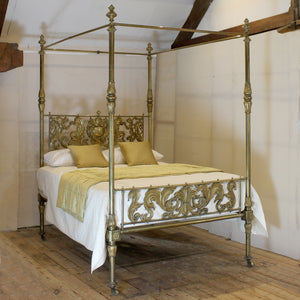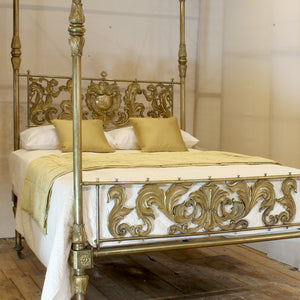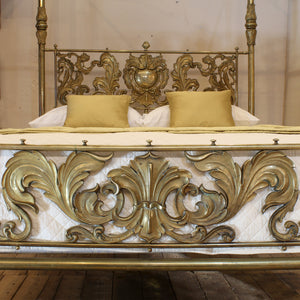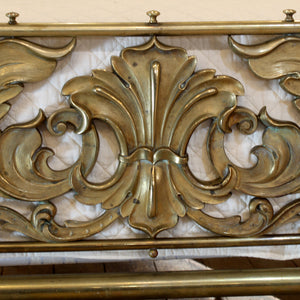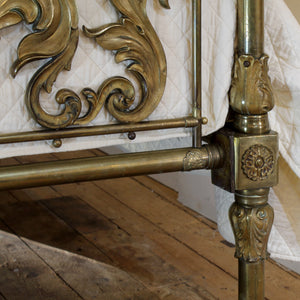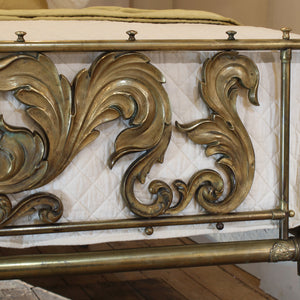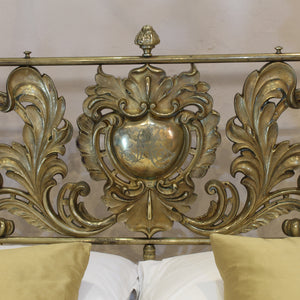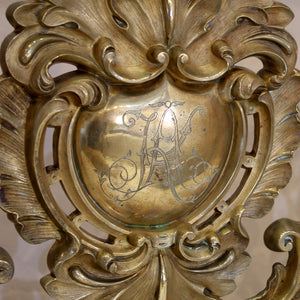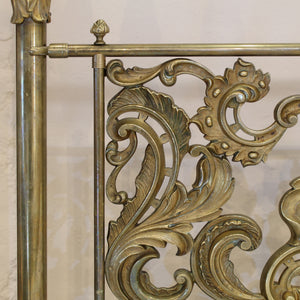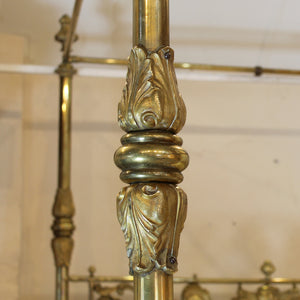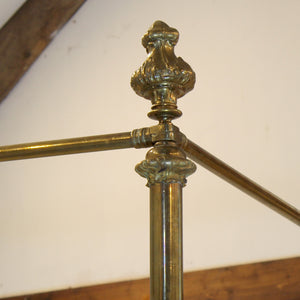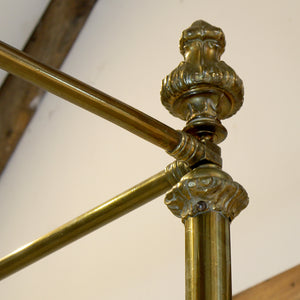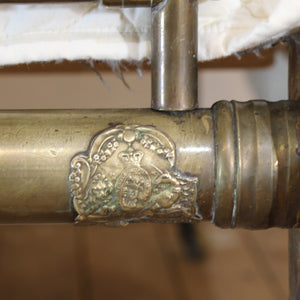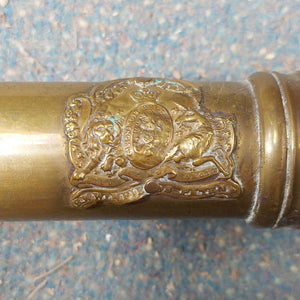An important museum quality brass four poster bed made by R W Winfield circa 1831 to 1836 as a special commission for the prince of the Ottoman Empire in the harem of the Topkapi Palace in Istanbul.
The four substantial brass posts have cast fittings depicting acanthus leaves, ornate cast brass feet with brass castors, similar castings on their tops, and culminating in delicate brass finials. The side runners and cross runners are formed from brass tube over steel bars and are joined to the posts by means of hand-made tapered fittings on steel plates. The cast kneecaps of the bed are covered with brass plates and finished with decorative rosettes on their outer faces. The head and foot panels of the bed are formed from brass in a stunning scrolling leaf design, typical of the arabesque style. A crest at the centre of the head panel depicts two ornately etched interwoven letters, A and K.
On the underside of the front cross runner there is a brass plate depicting “R W Winfield’s Patent” underneath the royal coat of arms of William IV, which dates the bed as pre-1837. This is apparent on the coat of arms due to the inescutcheon of the Kingdom of Hanover, which was later removed in Victorian times. There is no diamond registration mark on the bed. However, that is an indication it was made earlier than 1842, when this dating system was introduced.
This fabulous piece has recently been acquired from a family in London whose origins are from Turkey. In the mid-Nineteenth century the bed was given as a gift to the bird keeper of the Topkapi palace by the Sultan, and it remained in the possession of the bird keeper’s family ever since, having been passed down from generation to generation.
It is the understanding of family members that the bed was originally made for the prince of the Ottoman Empire in the 1830s. It is therefore believed that A is the initial of either Abdulmejid (Sultan from 1839 to 1861) or his brother Abdulaziz (Sultan 1861 to 1876). The letter K represents “Kadin”, a generic name for the consort of the prince.
Robert W. Winfield was one of the most important metal furniture manufacturers of the Nineteenth Century. His works in Cambridge Street, Birmingham, established c.1820-9, pioneered the design and production of brass and iron furniture. R W Winfield’s 1831 patent allowed for the manufacture of bed pillars and legs in one entire tube of metal, and he was also known for his military metallic bedsteads, for which he claimed he was ‘proprietor of the original patent’. The firm became renowned for producing the most innovative designs in decorative furniture and exhibited in all the important international exhibitions of the time, including the 1851 Great Exhibition, where they displayed a brass bedstead.
The Anglo-Ottoman Treaty of 1838 established closer ties and trade links between Great Britain and the Ottoman Empire and represented a turn towards the west. It is possible that this specially commissioned piece was given to the prince of the Ottoman empire by the leading furniture manufacturer of the age, R W Winfield, to coincide with this treaty.
The Topkapi palace in Istanbul was the main residence and court of the Ottoman empire from the 15th century until the mid-19th century. The opulent interiors of the harem featured ornate interior decoration in the Islamic Arabesque style, which this bed’s design perfectly suits. In 1856 the court moved to the newly built Dolmabahçe Palace on the European coast of the Bosporus strait. This new palace in the European Baroque style represented further the turn towards Europe and away from the East. Possibly this Arabesque style of furniture fell out of favour and was given as a gift to the bird keeper around this time.
This wonderful piece of furniture truly is unique, and its specific history means it surely belongs in a museum, possibly even in the Topkapi Museum in Istanbul.
Overall, the condition of the bed is excellent considering the age. The only notable sign of wear are splits to the brass on the two tubular side runners, revealing the steel tube underneath, but these minor defects are not structural and will be hidden under the base and mattress.
Originally the bed would have had a tentacle canopy supporting a brass crown, however this has been removed at some point in its history, presumably so the bed will fit within a lower ceilinged room. It is possible to reinstate a tentacle canopy with cast crown if desired. Please enquire.
The price includes a specially made firm bed base to support the mattress. We can also supply mattresses to fit, which would be 5ft. wide x 6ft. 3in. long (150cm x 190cm). Please enquire.
Height: 94 in.
Width: 62 in.
Depth: 84 in.


